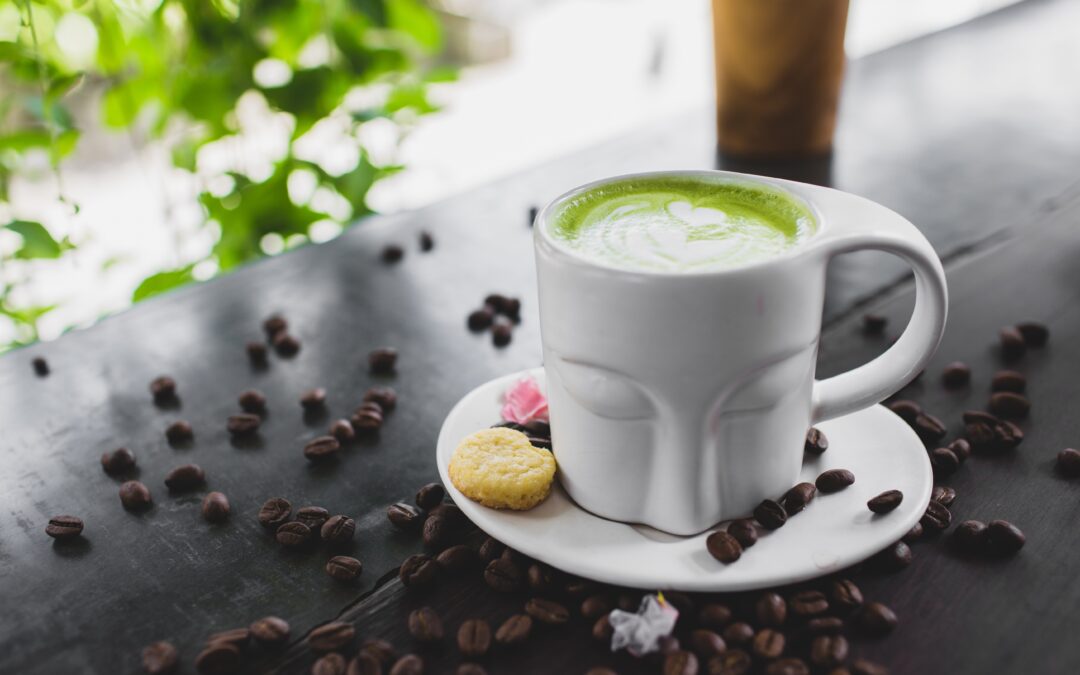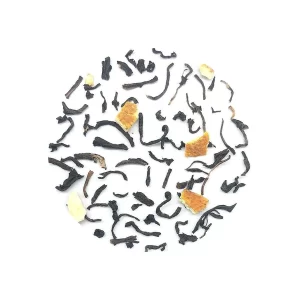Matcha is a high-quality, shade-grown green tea that is pounded into a fine powder. The powder’s vivid green hue comes from the emerald camellia sinensis plant. Matcha tea has recently grown in popularity around the world due to its flavour as well as its many health advantages. These include: immune system boosting, metabolism-boosting, and cardiovascular disease prevention.
Due to its profound calming effects, matcha tea is traditionally associated with Zen Buddhists. They often had matcha during their Japanese tea ceremony. Even today, the appeal of the tea can be largely attributable to its calming effects that promote re-energization.
Tasting Notes of Matcha Tea
What does matcha taste like? It’s not just you. Whether consumed alone, as a component of matcha tea lattes, or as a flavouring for baked products and other concoctions, matcha is well-known to many of our clients. However, they might not be aware of the particular flavour of premium matcha or they might be anxious that it will be too bitter or powerful for them. In the realm of tea, matcha is distinctive not only for its flavour but also for its composition.
It has a rich flavour profile with subtle vegetal grassy flavours, a sweet nuttiness that comes naturally. It leaves us with a hint of bitterness, and a satisfying savoury finish. Matcha is delicious because of the umami flavour, an irresistible savoury taste.
The mouthfeel of freshly made matcha tea is smooth and foamy. While organic green tea in its purest form is airy and transparent, with matcha tea you consume the entire camellia sinensis (tea leaf). On top of that, it has been stone-ground to suspend it in a liquid. Simply for its distinctive flavour, matcha is also used in a variety of foods, from ice cream and brownies to lattes and smoothies.
Health benefits
While this tea is being grown, a rise in chlorophyll production increases the amino acid content and gives the plant a darker green hue. The same plant as green tea is the source of matcha. However, because it’s produced from the whole leaf, it contains a higher concentration of antioxidants.
Six health benefits of matcha tea, all based on science:
-
High in antioxidants
Catechins, a group of plant chemicals found in tea that function as natural antioxidants, are abundant in matcha. Eating matcha may help prevent cell damage and potentially reduce your risk of developing a number of chronic diseases.
-
May help protect the liver
The liver is essential for good health. It processes nutrients, metabolizes medications, and eliminates pollutants. Certain research suggests that matcha may protect the liver from harm and reduce the risk of liver disease. However, further research is required to examine the impacts on people in general.
-
Boosts brain function
Matcha has been demonstrated to improve focus, memory, and response time. Additionally, it contains L-theanine and caffeine, which enhance several aspects of brain function. L-theanine modifies the effects of caffeine and encourages alertness. It helps prevent the energy drop that might occur after consuming caffeine.
-
May promote heart health
According to studies, green tea and matcha can reduce a number of heart disease risk factors. Matcha consumption may support a healthy heart and illness prevention when accompanied by a balanced diet and an active lifestyle.
-
Helps you lose weight
There’s a strong possibility that you’ll see “green tea extract” listed in the contents of any weight-loss supplement you look at. According to some research, green tea extract can boost metabolism and fat-burning, both of which may help with weight loss. Matcha originates from the same plant as green tea and should have the same effects. However, the majority of those studies concentrated on green tea extract.
Best Matcha tea
One kilogramme of finished tea requires six kilogrammes of fresh leaves. Each day’s production equals more than 330,000 cups of matcha, or enough to provide one cup of tea to every tea enthusiast in every state in India. One gramme of matcha powder is needed to make one cup of matcha.
Theflorateas’ Matcha emerald powder is the next gem (the mood stabilizer).
This tencha does have a blend of sweetness and astringency, that mouth-puckering feeling common to grape skins, persimmons, and strong teas, just like high-quality sencha and other brewed green teas. The distinct matcha notes, in contrast to those of those teas, include an additional layer of sweetness, a lovely, balanced bitterness, and a mouthwatering umami aftertaste.
Some helpful tips; Some last words

- Not all matcha is created equal: With so many brands and such a vast range in quality, purchasing matcha for the first time can be confusing. I usually advise searching for one without additional sugar. Even though “the ceremonial sort” will cost more, it has a mellow flavour and is produced from the newest tea leaves.
- It doesn’t last forever: The shelf life of matcha is not very lengthy. To keep it fresh, I advise purchasing it in tiny quantities and putting it in a tea caddy (container) in the refrigerator.
- You might want a matcha whisk: I advise buying a chasen, a bamboo whisk, if you frequently make matcha (pictured here). Due to its unique construction, clumps are broken up and a foamy layer is produced on top of the tea.
- Sweeten to taste: The grassy, umami flavour of matcha can take some getting used to. Don’t be afraid to add a few drops of maple syrup or honey if you’re cooking it for the first time.
Matcha green tea is often made with just green tea powder and water, but you can also make a latte by adding heated milk to your beverage. I adore making my own with homemade oat milk, coconut milk, or almond milk. Use a matcha whisk to create foam, then add sugar to taste and enjoy!
Do not forget to drink the brewed green tea. It is similar to boiling spinach, removing it from the pot, and only drinking the water. Even if you’re tossing away the nicest part, you’ll still obtain some of the nutrients. “When using matcha, the complete tea leaf is consumed.”



